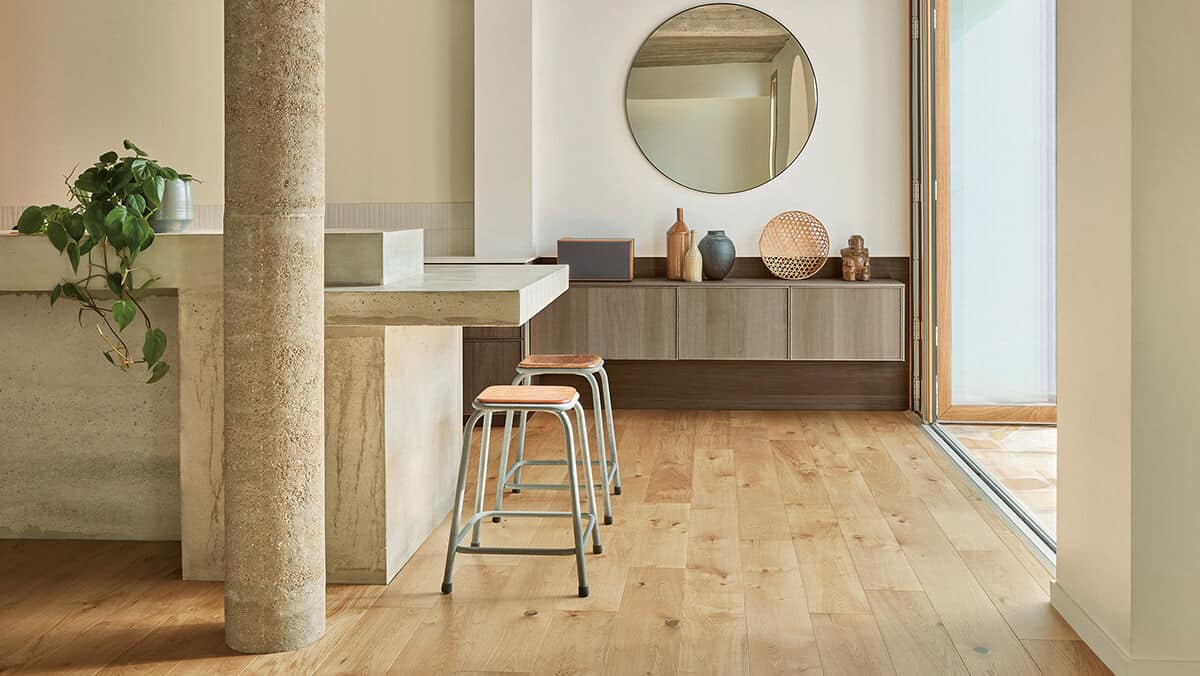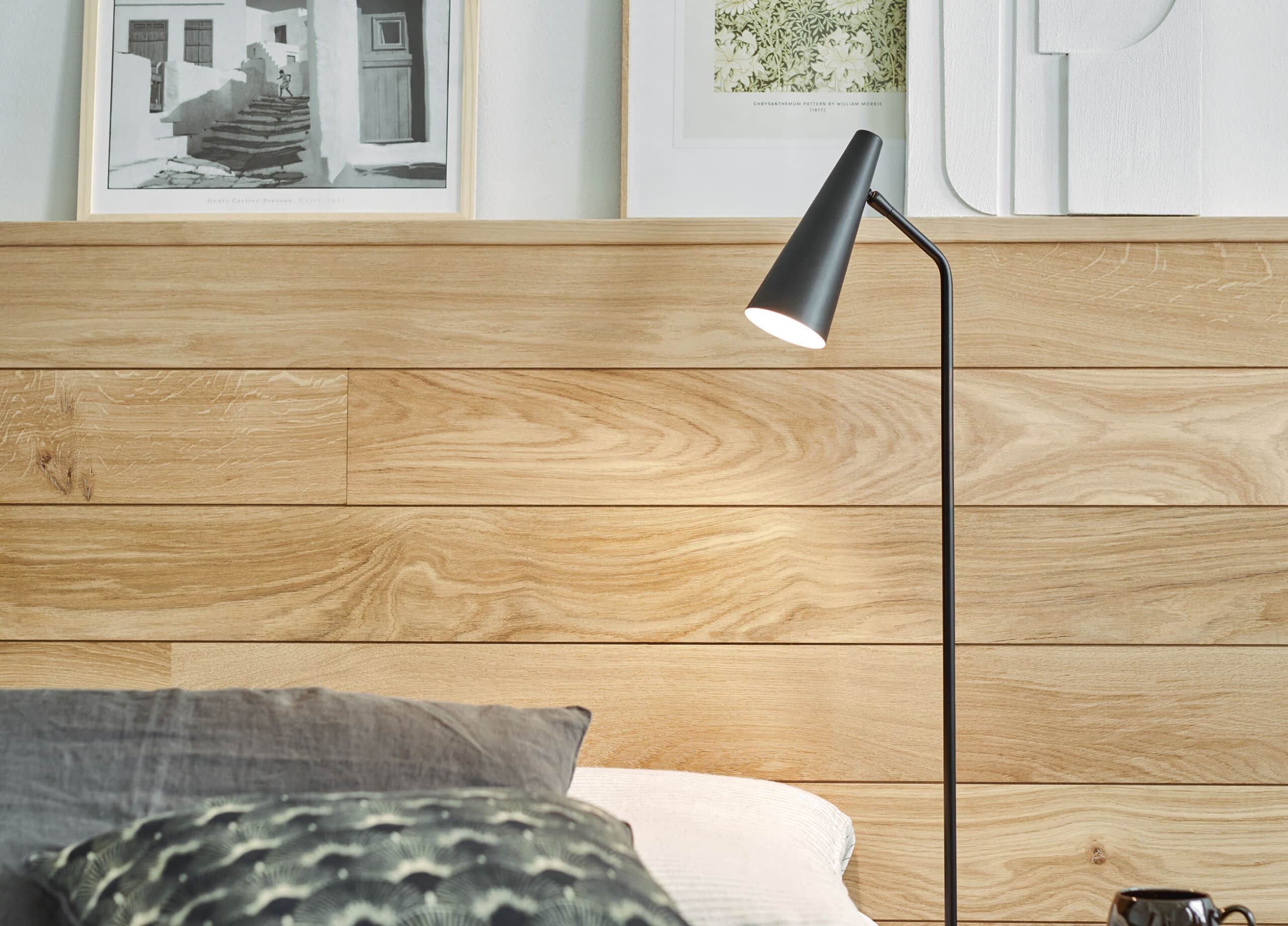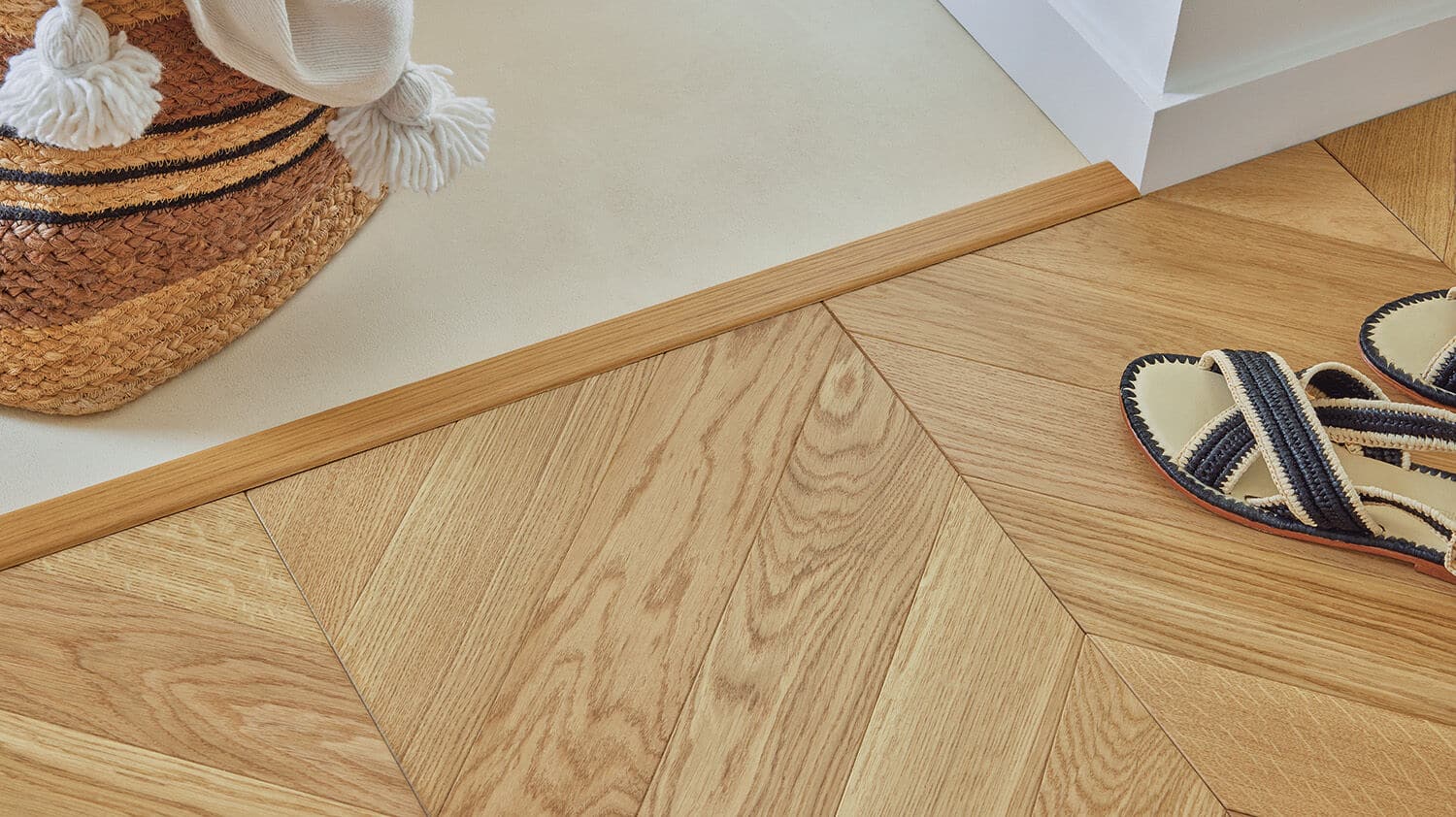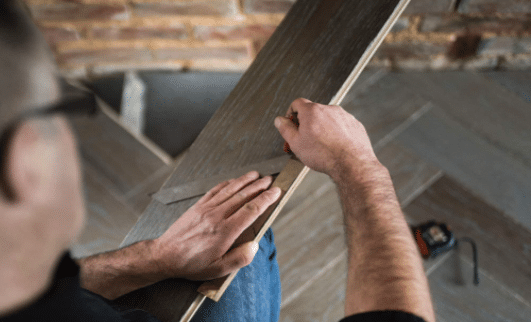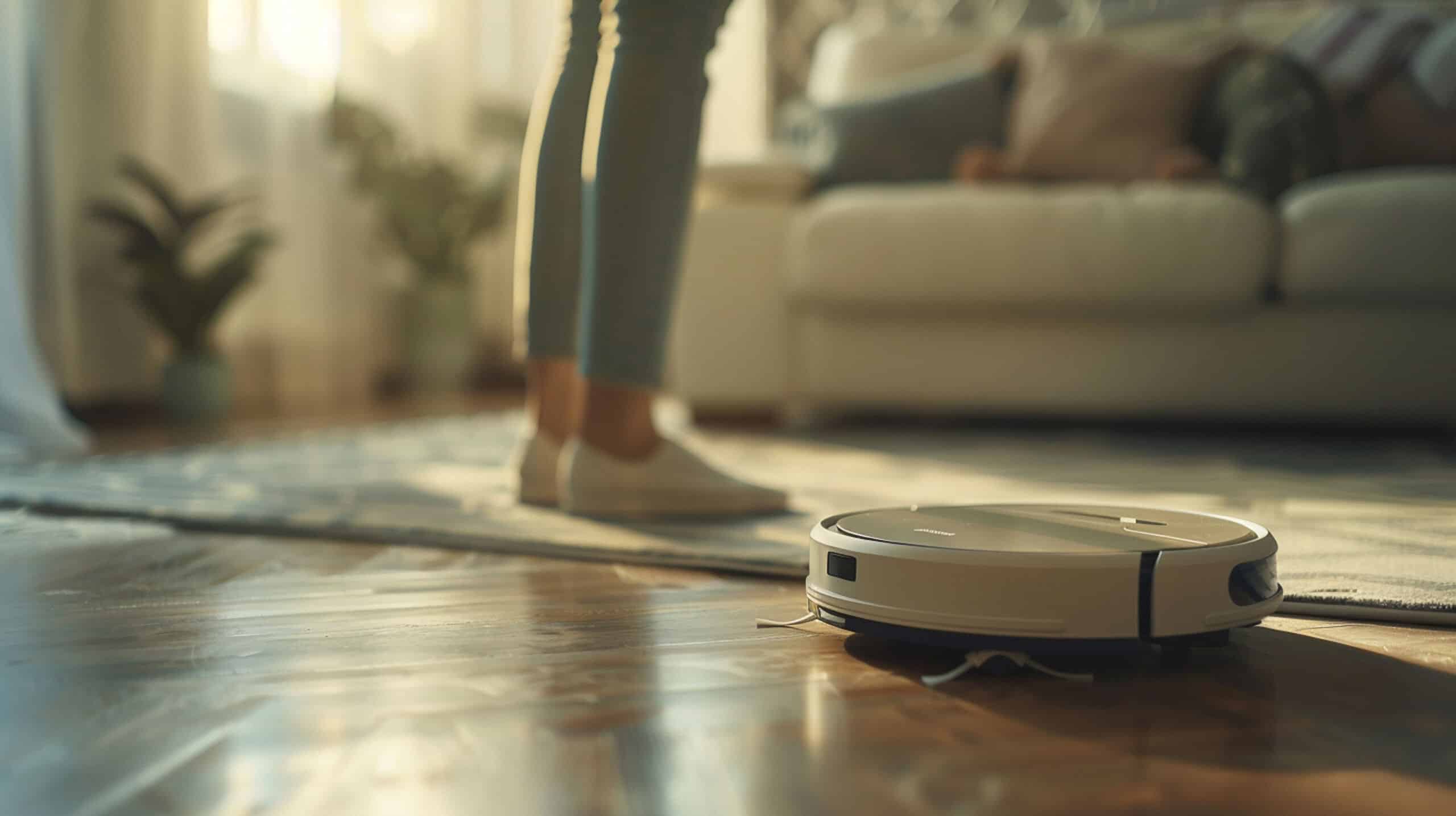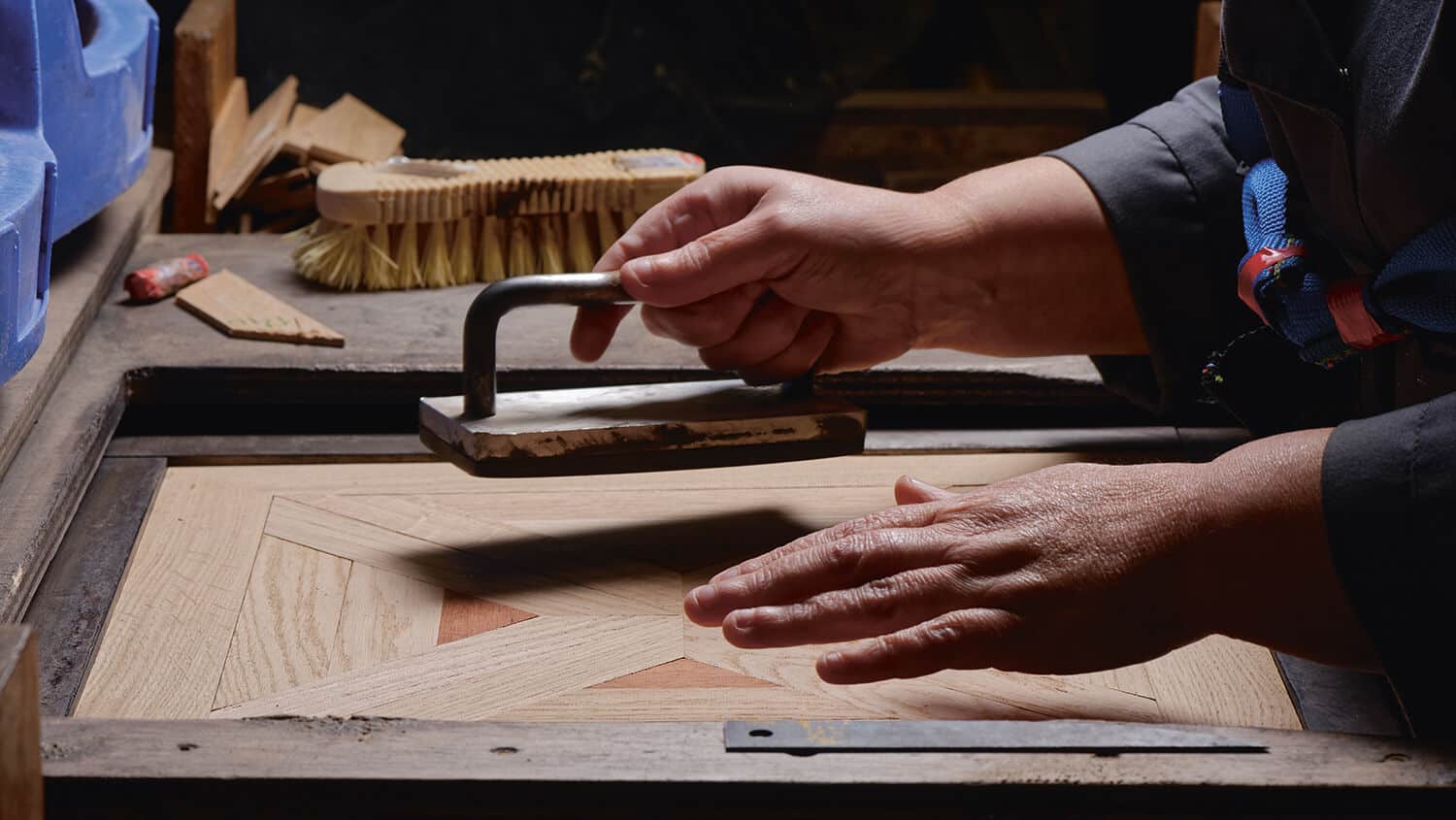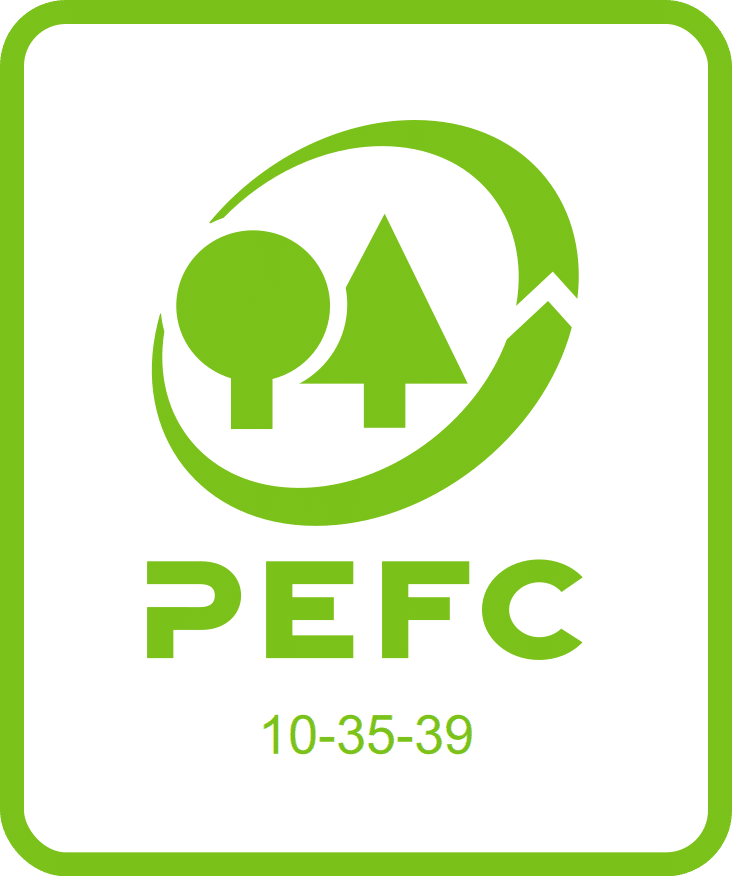How to choose a wood floor?
Choosing your wood floor should be based on several factors: the shade and finish, the type of installation (variable lenghts, multi-width, Herringbone, Chevron…), the format, the appearance of the wood (more or less distinctive), and the type of wood floor (engineered or solid).
Which type of wood floor should you choose?
One of the first questions to answer when choosing your wood floor is the type of wood used. For example, once installed, it can sometimes be difficult to differentiate between solid and engineered wood floor. However, each has its own unique characteristics.
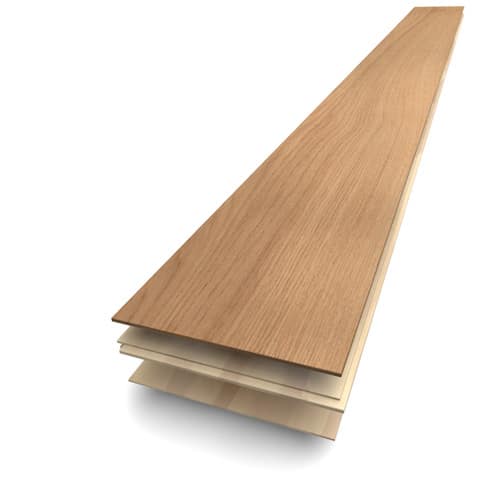
Engineered wood floors
Engineered wood flooring consists of a layer of noble wood (at least 2.5mm thick) glued onto a plywood or fiberboard panel. This panel is itself glued onto a stabilizing layer to balance the wood’s tensions and prevent warping. Floating installation associated with engineered wood flooring is the easiest type of wood floor installation.
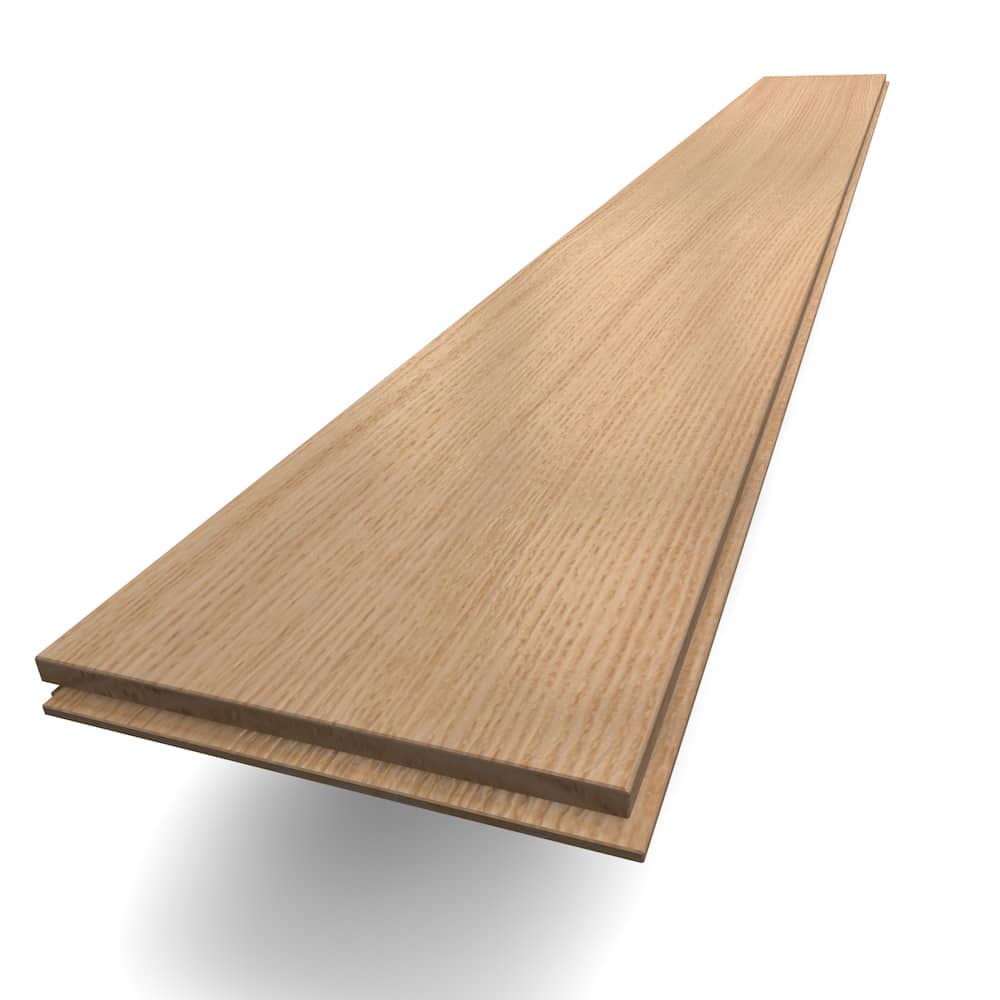
Solid wood floors
This type of wood floor is composed of a single piece of noble wood. It can be more expensive depending on the thickness, but it has a longer lifespan. If you want to invest in a long-term wood floor, a solid is the best option. You can renovate it by sanding, lacquering, repainting, and oiling it many times. Note that this type of wood floor must be glued down and therefore requires more skill and appropriate substrates.
Which wood species should you choose for your wood floor?
One of the important characteristics when choosing a wood floor is the wood species used. Depending on your preferences and usage, you will have many technical and aesthetic solutions.
French and North American Wood Species
These wood species have a traditional appearance, making them easy to match with your interiors to create a warm home atmosphere! There is something for everyone as many types of wood exist; here are some timeless classics:
- French Oak: This type of wood is one of the most durable in its category. It ensures long-term stability and the charm of a traditional ambiance.
- French Flamed Beech: The second most common hardwood in French forests, its distinctive flamed appearance results from a natural oxidation process within the trunk.
- Walnut: This type of wood is semi-hard. Choosing walnut parquet is often recommended for rooms with light-colored walls due to its beautiful dark color and characteristic grain.
Exotic Wood Species
- Teak: Ideal for the bathroom, its high resistance to moisture variations gives it great longevity in wet areas.
Which installation method should you choose for your wood floor?
There are three types of installation: floating, glued, and nailed. Each has its advantages and disadvantages depending on the structure of the room where your parquet will be installed and the type of wood flooring chosen.
Floating Installation
Floating installation is the most common when choosing a wood floor due to its simplicity and speed. With this type of installation, the wood flooring is not fixed to the floor but is joined between each plank using a click system or traditional tongue-and-groove gluing!
Glued Installation
It is mandatory for solid wood floors less than 18 mm thick and is possible for all engineered wood floors. It provides walking comfort due to low impact noise resonance and is particularly suitable for large areas.
Nailed Installation
Before the advent of new installation techniques, nailed installation was the most widespread. The technical difficulty of this method lies in the need for an appropriate structure (joists, beams) to be planned during the construction or renovation of the house. This installation will delight enthusiasts and renovators of old houses who do not want to lose the charm of the building!
How to choose the layout of your wood floor planks?
The layout of your parquet planks is also an important factor when choosing your wood floor. In theory, wood floor planks are placed in the direction of the room’s light source. In practice, other choices may be necessary to meet the specific needs of your rooms.
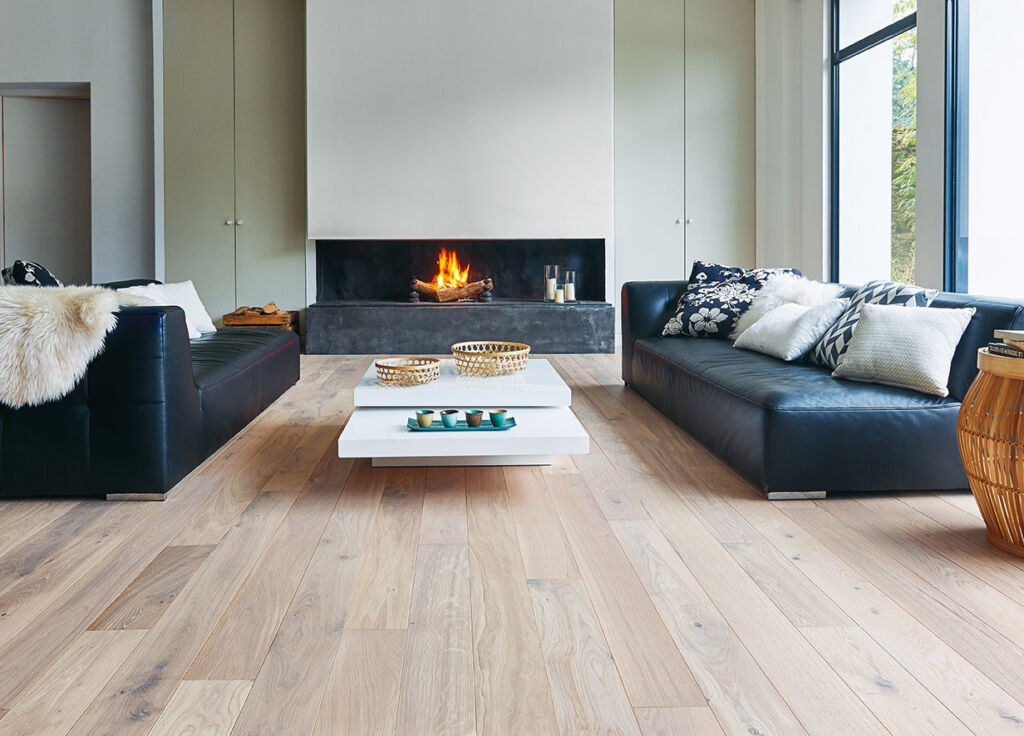
Tips to make your room appear larger
We recommend laying the planks parallel to the wall you want to extend. For a sense of length in a hallway, lay the planks parallel to the longest side. To widen a room, orient the planks parallel to the width.
Professional tip: In a narrow room, avoid using too dark a wood floor color to prevent emphasizing the narrowness of the space! For colors, we recommend light parquet and dark walls to accentuate the depth effect of the installation. In a narrow or dimly lit room, opt for a light wood floor or a satin finish to capture the light.
For more tips, feel free to read our comprehensive guide on installing wood floors!
But that’s not all! Other factors must also be considered when choosing your wood floor:
- The room’s lighting, wall color, or furniture shade: for example, in a fairly bright room, lay a dark wood floor and vice versa;
- The room’s usage frequency: depending on whether it is a low-traffic bedroom or a frequently used corridor leading outside, the wood floor should be made of either European or exotic wood species;
- Compliance with condominium regulations in apartments;
- The characteristics of the substrate.
For personalized advice and information, feel free to contact us!

